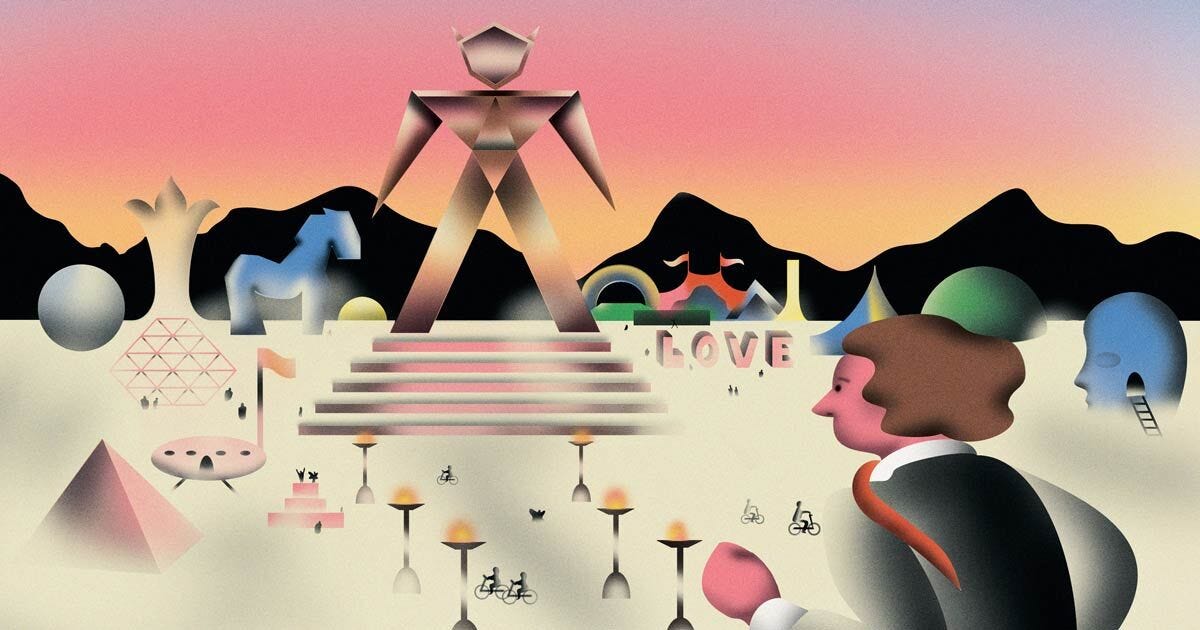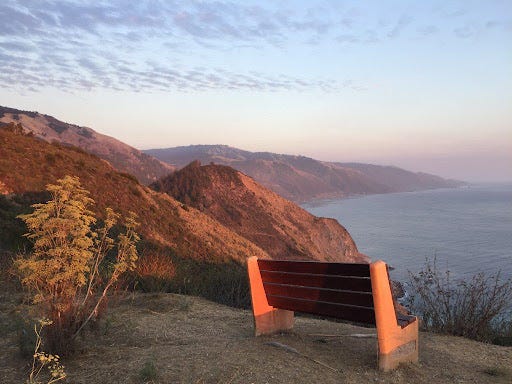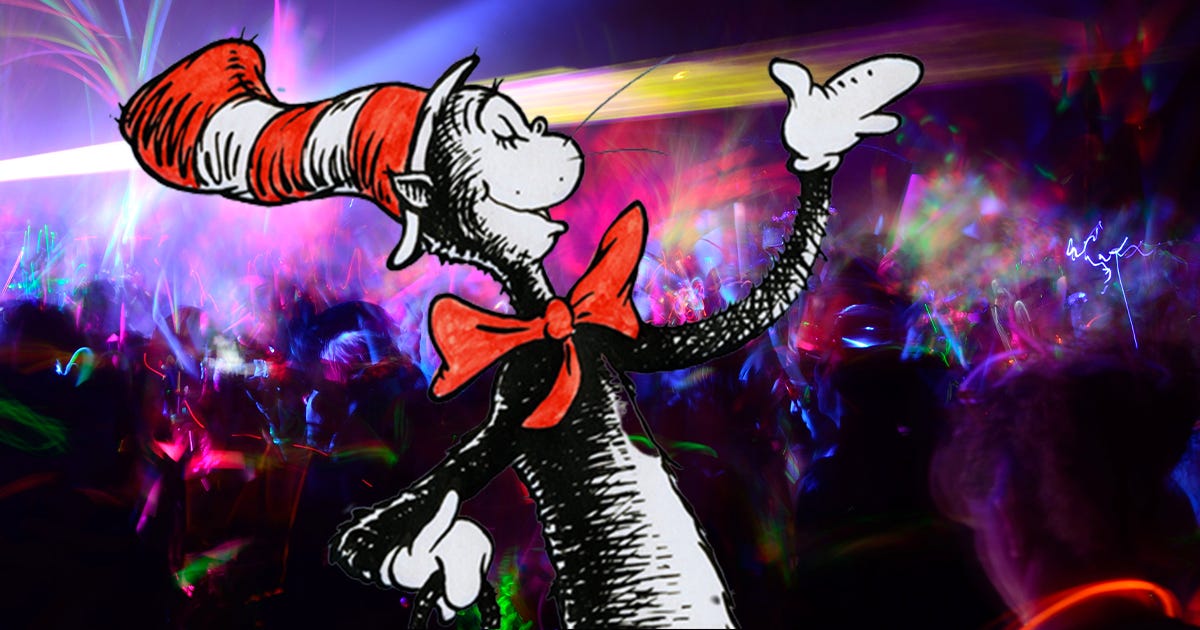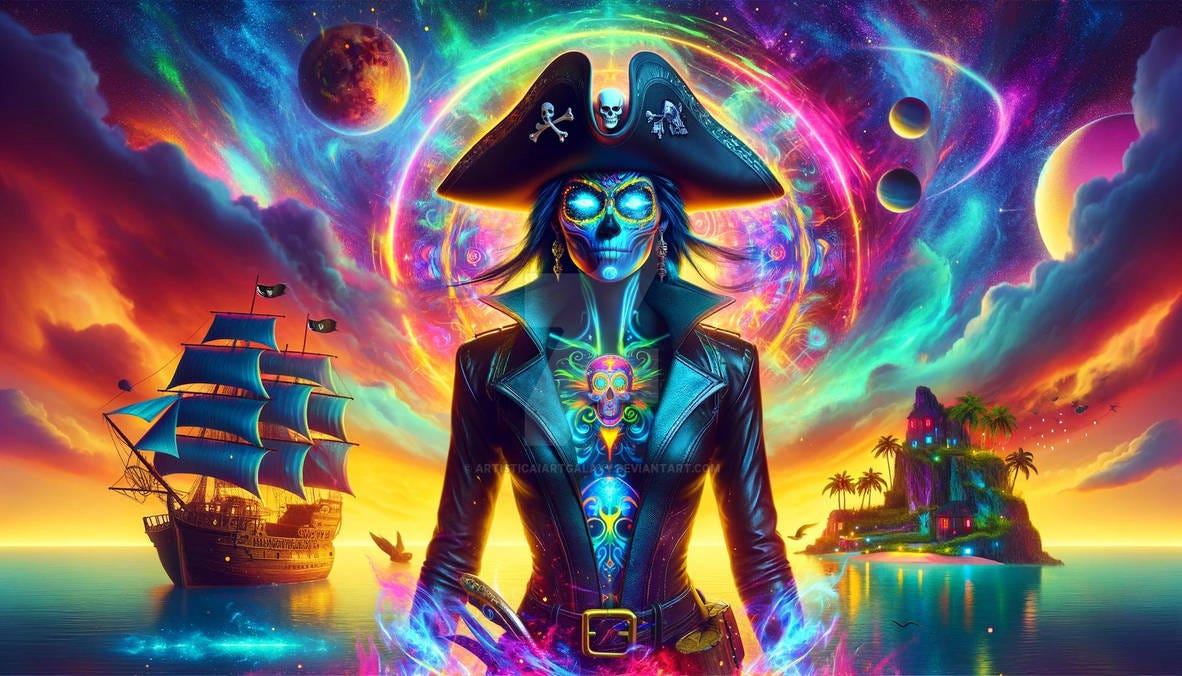Molly, Monks, MAPS and Mayhem
The Psychedelic Renaissance is Dead, Long Live the Psychedelic Underground!
Summer of 2017 I ran into Rick Doblin at sunrise near a desert temple.
It was an unusually quiet moment amidst all the carnival mayhem and we had a sweet moment to connect.
I thanked him for the prior thirty-odd years of his work to legalize psychedelic therapies–not for the current bandwagon moment, but for all those thankless years of pushing rope uphill and against all odds.
“I appreciate that,” he told me, “but honestly, I’m more concerned about the road ahead. We have even more opportunity now, but also so many more ways this could go wrong.”
At the time, I thought he was just being humble and cautious. With this past year’s organizational power plays and last week’s FDA denial for MDMA therapy, it turns out he was sadly prescient.
So in honor of Rick Doblin and his four decades of efforts to bring psychedelics to the mainstream, here’s an excerpt from my last book Recapture the Rapture plus a few interwoven thoughts on our current moment.
(Rick told me this initial story one night over dinner and I thought it was too good not to share)
The Rolling Monks of Carmel
If you meet Rick Doblin, Harvard PhD and founder of the Multi- disciplinary Association for Psychedelic Studies (MAPS) today, you might mistake him for a shape-shifter. One day, in a coat and tie, he’ll be sincerely coordinating with DEA officials or testifying in Congress on the benefits of MDMA therapy for veterans.
The next, he’s dressed in a rainbow patchwork jacket, hosting psychedelic harm-reduction workshops at a desert festival.
But if you wind the clock back thirty years, you’d find him in a different form again—a mischievous Johnny Appleseed, bringing the Fruit of the Tree of Knowledge to those who’d pledged their lives to tending it.
Back in 1984, MDMA was an entirely legal research chemical, and Doblin was still formulating his core thesis that it could help people heal and become more effective human beings. He met some monks from the Benedictine Immaculate Heart Hermitage in Big Sur and made a proposal: He wanted to offer them MDMA, or “ADAM” as it was known then, as a supplement to their normal daily prayer routine. The monks, skeptical but open, agreed. Doblin proceeded to hook some brothers up.
That day, they all went about their sitting meditation in customary silence. As they did the time-released capsules flooded their brains with serotonin, oxytocin, dopamine, and prolactin. Brother David Steindl-Rast, a psychologist before he entered the monastery, described his experience.
“It’s like climbing all day in the fog and then suddenly, briefly seeing the mountain peak for the first time. There are no shortcuts to the awakened attitude, and it takes daily work and effort. But the drug gives you a vision, a glimpse of what you are seeking.”
Another monk commented that “in thirty years of meditating on the love of Christ, today I felt His presence more strongly in my heart than at any other time.”
The next day the abbot called Doblin into his office, looking concerned. “What have my monks been doing with your drugs?” After a searching conversation Doblin said felt like a dissertation defense, he convinced the abbot. The monks could keep on rolling.
By swapping out the “placebo sacraments” of wafers and wine, Doblin had provided contemplatives who’d dedicated their lives to a third-person relationship to God with something more immediate.
Through first- and second-person I-I and I-Thou communion, they experienced a chance to lift themselves above the fog of obedient practice, and to glimpse “the mountain peak for the first time.”
Consuming the appropriately nicknamed “ADAM,” in conjunction with decades of discipline and the natural beauty of their monastery, gave them the chance to live as Adam—firstborn, reborn, primordial Man.
Bathed in the “peace that passeth all understanding” (if only for a dreamy afternoon), they could taste the fruit they’d dedicated their lives to tending.
After that moment of grace in 1984, things went south. Use of the substance broke out of its therapeutic and sacramental confines and exploded as a club drug in the rave scene. A few hospitals began see-ing ER visits from users.
Newspapers amplified the coverage, calling it an international epidemic. MDMA got reclassified as a Schedule I controlled substance.
The next forty years of Doblin’s work began to take shape in front of him. With ADAM (rebranded as the far more marketable “ecstasy”) cast out of Eden, it became Doblin’s mission to get the forbidden fruit back past the gatekeepers.
And just this week, after years of promising progress, the FDA declined approval for the drug therapy MAPS was proposing.
Whether this is a speedbump or a graveyard for MAPS’ efforts is too soon to tell.
It may help ensure the most rigorous studies and clinical protocols make it to the mainstream.
More likely, it will do nothing more than open the way for savvier, better funded for-profit entities to ram through approvals for their patented pills.
Johnson and Johnson did it with its weak-sauce nasal Ketamine spray a few years ago (with far less robust data, but far more robust lobbyists).
Compass Pathways is likely next at bat, and that lot does not give a fuuuuuck about healing the heart of a wounded humanity in time to save our planet!
#germansgonnagerman
We coulda had Eden.
Instead, we’re gonna end up with Prozac Nation 2.0 (with new improved 5HT2A receptor sites!)
***
But there are subtler reasons this thing went sideways too.
Years ago, the psychedelic renaissance made a deal with the devil that’s sadly come due.
Everyone agreed to pretend there’s nothing more to these substances than what fits in the DSM V psychiatric manual of illness.
Take the pill, put on these comfy eye shades, have a little chat with the friendly therapist. Submit your co-pay and Ta-Da! You’ll be right as rain!!!
In three sessions or less.
My mind on my money or my money on my mind?
I hope I get at least one of them back!??
We talked up Veterans and war-torn PTSD cuz it plays well to the neocon politicians and mega-donors in the red states.
But we talked down mentioning the bats. (seriously, when are we gonna tell ‘em about the fucking bats????)
So we hyped these substances as safe, effective, almost instantaneous cure-alls. We neglected to mention their Tricksy effects, or the yowling terror of the Screaming Abyss.
Because there’s a dark underbelly to the groundbreaking research that’s been pouring out of places like Johns Hopkins and Imperial College over the last decade.
Beyond the truly astonishing statistics and accounts of complete remission of depression and PTSD symptoms in just a few sessions are the quieter, sometimes desperate queries from patients six months later.
And six months after that.
Once the all-too-real limitations of their flawed world and selves return. Back to the bottom of the slide, only this time, there’s no going back to their old games.
Old-timey mystics used to call that the “Dark Night of the Soul”— the hair ball period after you’ve seen the light, and then had it unceremoniously whisked away. It’s always darkest (and coldest) just before the dawn.
Sometimes, that next sunrise takes a lot longer to arrive than we hoped.
Which begs the broader question: How transformative can entheogens, or “sacred substances,” really be? And are we using them right? This is a real issue. Arguably, it is the issue when it comes to appropriate use of psychedelic substances.
Can we ever, as scholar Huston Smith once mused, “transform our passing illuminations into abiding light?”
After all, if psychedelic benefits extended linearly from the studies we’ve been reading lately, then by all accounts, baby boomer hippies would be Galactic Time Lords by now.
If three sessions of MDMA therapy can cure everything from depression to PTSD, why aren’t thirty-three sessions turning that Cat in the Hat Raver into a Bodhisattva?
Once we look beyond the neurochemistry of the experience, how much of the breakthrough healing is prompted by a new direct sense that there is, in fact, Capital M More to life?
What at first is revelatory and uplifting—i.e., “I don’t have to live a life of suburban conformity!”
or
“I am worthy of love!”—can quickly become existentially overwhelming.
Once I’ve had my Eureka experience, I realize that all of that More still irreducibly contains the human condition within it.
Welcome to the Brotherhood of the Screaming Abyss. There’s a good reason why most never peer over the Edge. Sometimes More isn’t always Better.
It’s just More.
A lot more.
(and we prolly shoulda disclosed that in our initial FDA apps and patient intake forms)
***
But the burden doesn’t sit solely with MAPS. It lies with the far broader ecosystem of psychedelic enthusiasts as well.
(editor’s note: getting turned onto psychedelics after reading How to Change Your Mind is like getting turned onto the Grateful Dead after hearing Touch of Gray on the radio. It’s not that you’re not welcome at the party, but know your place kids, know your place!)
Because our collective behavior outside the clinical trials, has as much to do with our current failure as what’s been happening within them.
Here’s why:
We’re familiar with the overprescription of antibiotics and how it’s creating super germs.
The same can be said of excessive and unstructured use of psychedelics. When they’re used for everything from therapy to biohack to weekend fun, we can end up overprescribing them too.
Only in this case, we don’t get superviruses coming back to plague us, we get superegos.
The very medicine intended to get rid of our selfish attachments can actually create even more virulent versions of the selves we were so desperate to transcend in the first place.
Instagram shamans.
Venture capitalists “called in” to disrupt the psychedelic therapy space.
Preening yogis who care more about how their butts look in leggings than their adherence to any eight-limbed path.
Self-appointed mystics convinced their “downloads” hold the keys to unlocking Ancient Egypt or Atlantis.
This is the downside of Oliver Sacks’s observation that “drugs offer a shortcut; they promise transcendence on demand.”
No need to practice Vipassana or pranayama for years. No prerequisite to cultivate ethics and right-livelihood ahead of time.
“Buy the ticket, take the ride,” as Hunter Thompson said. Millions of people are heeding that advice.
It’s not surprising that with such inconsistent preparation and repeat visits to the cosmic carnival, some of those roller coasters go off the rails.
(And that’s 100% on us, not MAPS! We’re hardly representing the fruits of the psychedelic experience all that well to the bureaucrats in DC).
Our current relationships to “entheogens” or substances used with sacramental intent are erratic and without precedent.
Today, you can order the strongest psychoactives ever discovered and have them de- livered two-day priority to your front door. Ayahuasca tourists flock to the Amazon.
Twentysomething kids puff DMT (one of the most powerful and disorienting drugs out there) at EDM shows, and Silicon Valley CEOs smoke Sonoran toad venom as one more merit badge for the “tech-titan who has experienced everything!”
This is not normal. It’s like breaking the sticks off bottle rockets and still hoping they’ll go where you point them. Never have we combined such unstructured and open access to such powerful tools in all of human history, anywhere, ever.
The medical and recreational use models aren’t up to the job of guiding us safely and ethically through this complex terrain.
***
Fortunately, there are examples of how to properly integrate sacramental use into a culture—we just need to poke around a bit in the anthropological literature to find them.
And they all point to indigenous traditions, mystery schools and the Promethean underground.
So while our current efforts to gain FDA approval for pharmacological and therapeutic interventions have hit a significant setback this past week, we kind of knew something like this was coming.
At best, we were going to get Prozac Nation 2.0.
Denatured, demystified, commodified.
At worst we were going to get VC douche-bros as the new money changers in the temple. Strip-mining anything and everything of value from the psychedelic mysteries and penciling it in as one more line item in their P&L reports.
#Soma (but not the good kind).
So we took a gamble and tried to smuggle the Mysto past the gatekeepers and got popped right before we got away with it.
The priests and the Church ladies (both literal and metaphorical—looking at you Psymposia crew), clutched their pearls and rang the bells of alarm. Tut-tutting and harumphing into the FDAs ear with just enough plausible concern to queer the whole deal.
But the lysergic pirates need to take some responsibility too.
Of course we didn’t cross all of our T’s and dot all of our I’s!
Of course we believed these things were more meaningful than the mechanical action of neurotransmitters and Lykert scale surveys taken under fluorescent lights!
Of course we had bolder ambitions than adding one more pill to the medicine cabinet of industrial health care.
We were too busy wrapping our heads around a heaving polycrisis and hoping against all hopes that what we’ve seen in the Deep Now might trickle into our Here and Now.
We were too busy trying to translate the ancient glyphs of the Tetragrammaton into the Story of How We Begin to Remember.
Second star to the right, straight on ‘til sunrise…(isn’t that how we get back to Neverland?)
But let’s call a spade–we got busted because we got sloppy playing The Man’s game.
For as long as we’ve been humans, we’re been playing a different game.
Hide and Seek. Cops and Robbers.
You know how it goes–a Promethean steals fire from the gods, shares it with humanity, and a righteous party breaks out.
We get smart, invent stuff, heal, connect, create and intuit.
We hatch plans.
And then, inevitably, the priests come to shut the party down. Sometimes they’re wearing black cassocks. Other times they’re wearing shiny black suits.
But always, the pattern is the same.
The way out of this game is to remember we’re playing it.
The way out of this game is to write the next chapter faster than the Spooks can decipher our scratch notes.
The way out of this game is to invite so many people to play it that it simply cannot be shut down.
A revolutionary flash mob of epic, gnostic proportions.
So the psychedelic renaissance may be dead.
This time.
Long live the psychedelic underground.
For all Time.
And every time.
(It’s where all the funnest shit’s been happening anyways ;)












"Venture capitalists “called in” to disrupt the psychedelic therapy space." Hahhaa holy shit
“Long live the psychedelic underground.”
Some of them are coming up to the surface by defining themselves as a church. Wondering where that will go. Haven’t been, but our city has one: Psanctuary.